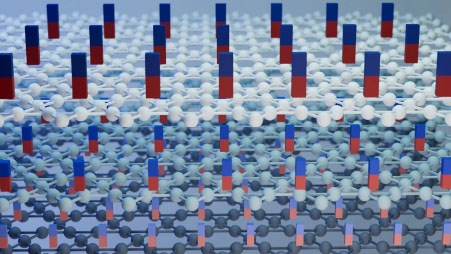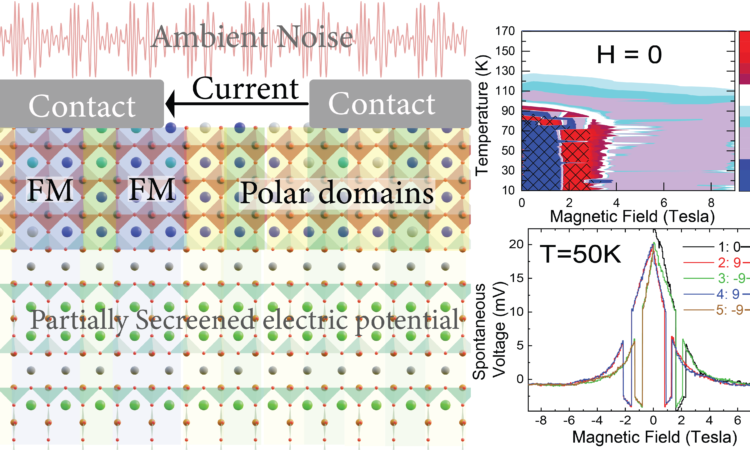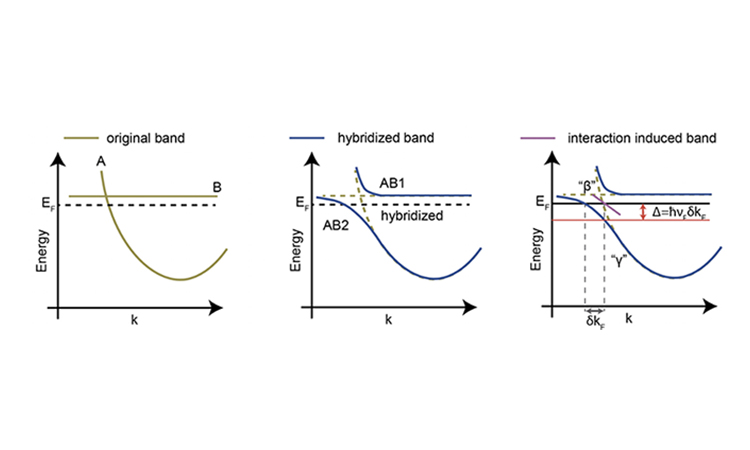Unraveling High Temperature Hidden Time Reversal Symmetry Breaking in Kagome Superconductors

By Zurab Guguchia, PSI
Kagome superconductors have fascinated scientists for their beautiful, web-like atomic structure and their rich variety of intertwined electronic behaviors. Among their most mysterious properties is the breaking of time-reversal symmetry (TRS)—a situation where the laws of physics no longer look the same if time were to run backward. This unusual effect hints at exotic patterns of microscopic currents on the lattice and at new kinds of quantum order—a novel form of magnetism in which the electron’s spin does not play the dominant role. PSI Senior Scientist Zurab Guguchia and his colleagues have published a Nature paper [1] reporting TRS breaking in the bulk of the kagome superconductor KV3Sb5 in the charge ordered state. They used the muon-spin rotation technique under zero and high magnetic fields to make this discovery. Yet, until now, it was not known whether this hidden symmetry breaking could be tuned—or how it might change between the surface and the bulk of a crystal.

Using a highly sensitive technique called low-energy muon spin rotation (LE-μSR), researchers have now mapped how TRS breaking develops with depth inside the kagome superconductor RbV₃Sb₅, which also hosts a charge-ordered state. The results are striking: deep inside the material—more than 33 nanometers below the surface—the internal magnetic field begins to appear as the material enters its charge-ordered phase, a clear fingerprint of TRS breaking [2]. Near the surface, however, the signal becomes much stronger and starts at temperatures far above the onset of charge order.
This makes RbV₃Sb₅ the kagome superconductor with the highest known TRS-breaking temperature—around 175 K, an exceptional value for this family of materials. Even more intriguingly, the stronger surface effect suggests that the mechanism driving TRS breaking could be different near the surface, possibly influenced by subtle atomic rearrangements or stronger electronic interactions. Surprisingly, this surface region extends over about 33 nanometers—much deeper than usually expected for surface effects. Such findings open exciting possibilities for tuning quantum properties through surface engineering, which could prove valuable for future quantum technologies where surface behavior plays a key role.
Building on this work, PSI Senior Scientist Zurab Guguchia and colleagues has also discovered charge order above room temperature and magnetism in another kagome superconductor, LaRu3Si2, and achieved the highest superconducting critical temperature under pressure [3-5] among all known kagome systems. Together, these discoveries show that kagome materials are not only a playground for exploring exotic quantum phenomena but also a promising platform for realizing correlated electronic phases at unexpectedly high temperatures.
[1] C. Mielke III et. al. and Z. Guguchia, Nature 602, 245 (2022).
[2] J.N. Graham et. al. and Z. Guguchia, Nature Communications 15, 8978 (2024).
[3] I. Plokhikh et. al. and Z. Guguchia, Communications Physics 7, 182 (2024).
[4] C. Mielke et. al. and Z. Guguchia, Advanced Materials 2503065 (2025).
[5] K. Ma et. al. and Z. Guguchia, Nature Communications 16, 6149 (2025).
Based on the article Depth-dependent study of time-reversal symmetry-breaking in the kagome superconductor AV3Sb5, published in Nature Communications



